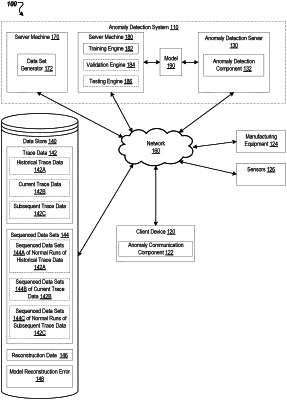| CPC G06N 3/08 (2013.01) [G06F 18/2148 (2023.01); G06N 3/049 (2013.01)] | 19 Claims |

|
1. A method comprising:
training a long short-term memory (LSTM) recurrent neural network (RNN) model for semiconductor processing fault detection, the training of the LSTM RNN model comprising:
generating training data for the LSTM RNN model, wherein the training data comprises first training input and first target output, wherein the first training input comprises a first window of time of first sensor data from a first plurality of sensors, wherein the first target output comprises at least one of the first window of time of the first sensor data from the first plurality of sensors or a second window of time of the first sensor data from the first plurality of sensors, wherein the first target output is same as the first training input or the first target output is offset from the first training input by one or more windows of time, and wherein the first sensor data is associated with normal runs of semiconductor or display manufacturing processes of semiconductor processing equipment; and
providing the training data to train the LSTM RNN model on the first training input and the first target output to generate a trained LSTM RNN model, wherein an anomaly response action for the semiconductor processing equipment is to occur responsive to one or more outputs of the trained LSTM RNN model.
|